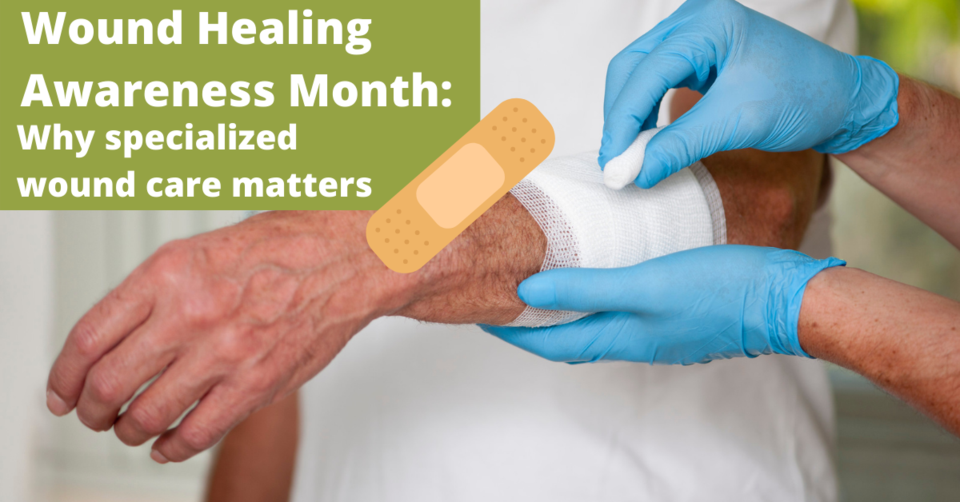When the average person hears the term 'wound care' they often think of cuts, scrapes or bandages. But specialized wound care programs are much more; they play a vital role within the communities they serve. June is Wound Healing Awareness Month (WHAM), a time to recognize the challenges faced by individuals with non-healing wounds and increase awareness of how specialized care can save limbs and lives.
In the U.S., nearly 7 million people suffer from chronic wounds including diabetic foot ulcers, venous ulcers and pressure injuries (bed sores). Early evaluation and treatment is very important to help avoid complications including infection, sepsis or amputation.
The majority of wound care patients have been diagnosed with diabetes, which can greatly impact wound healing. Of the 34 million people in the U.S. who have been diagnosed, approximately 150,000 will lose a limb after a chronic wound becomes severely infected.
“In most cases, non-traumatic lower extremity amputations can be avoided,” said Dr. John Martin at The Comprehensive Wound Healing Center. “With early detection, proper evaluation and specialized treatment, most wounds can be healed in eight weeks or less. Our primary goal is to help patients avoid the drastic measure of removing a limb, foot or toe.”
The Wound Healing Center at East Georgia Regional Medical Center treats a variety of chronic wounds and conditions, including radiation injuries to the tissues following cancer treatment. Treatment modalities include debridement, or the removal of dead skin and tissue to stimulate healing; and hyperbaric oxygen therapy, which can speed healing by carrying extra oxygen to the blood, organs and tissues. Our physicians may also recommend compression stockings, artificial skin or negative pressure therapy.
Here are six things you need to know about specialized wound care:
- If you have a wound anywhere on the body that hasn’t healed within 3-4 weeks (earlier if you have diabetes), ask your doctor to refer you to a wound care specialist. Don’t “tough it out” or try to heal the wound on your own. Patients can avoid many complications by consulting with a wound care physician early on.
- Inspect your feet daily and keep them clean. If you have pedicures, be sure everything used on your feet is thoroughly sanitized.
- Be aware of diabetic neuropathy. Many diabetics don’t feel pain in the legs and feet because high glucose levels over time can damage the nerves in the lower limbs. A chronic wound can remain undetected for several weeks, causing an infection to develop and rage out of control.
- Control blood glucose levels. Elevations in blood glucose reduce the body’s ability to fight off infection and can slow the body’s healing process. Keeping glucose levels under control helps prevent hardening of the arteries, narrowing of the blood vessels and nerve damage.
- Learn about hyperbaric oxygen therapy (HBOT). If you’re a cancer patient suffering from the late effects of radiation treatment - even if it’s months or years later - ask your physician about HBOT. HBOT can help rejuvenate the skin and tissues by pumping oxygen-rich blood to damaged areas, encouraging healing.
- Smoking, excessive alcohol consumption and poor diet/obesity can play a role in the development of chronic wounds and can negatively impact healing. Do everything you can to live a healthier lifestyle.
If you or someone you love is suffering from a non-healing wound, contact a team of experts at The Comprehensive Wound Healing Center here in Statesboro, where they work with physicians to evaluate and treat non-healing wounds as quickly as possible.




